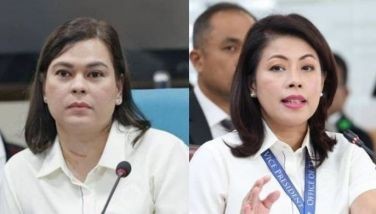Selling the Philippines as a product (part II - Foreign tourism development)

Now that the Tourism authorities have adopted a tagline – “It’s more fun in the Philippines – as a means of getting foreign tourists to visit the country, one aspect of promotion needs to be discussed. To build positive expectations about the Philippines as a destination, it is desirable to sell the country as a brand to build demand for tourism visits and sustain it.
A singleness of purpose can be achieved through complementary efforts among the stakeholders in the industry. That will produce benefits for the tourism sector and the economy as a whole.
Advertising the country is like allocating budget money for a public good. It is similar to spending for community health and sanitation, parks, and national defense. (A public good is a commodity or service which, once made available, can be used by all without exclusion.)
Private money can also be tapped for this purpose with wise guidance and coordination with the government. (I will explain this later.)
“International cable TV advertising.” As one who needs to keep up with global developments, I watch international news on cable. As a result, I get exposed to advertising by countries trying to attract foreign tourists. Cable is a powerful advertising medium.
All international travelers try to watch foreign news networks in addition to their home sources. Perhaps, tourists and business travelers look to CNN for news of the world. So, advertising the country on it makes great sense.
In fact, the Philippines had advertised in CNN before although this was limited and sporadic.
“Good examples of country promotion.” The advertising of country in CNN is characterized by exploiting images, impressions and testimonials. The imagery and context show the country’s attractive qualities. When testimonials are used, they employ foreigners to make favorable endorsements.
“Malaysia’s Truly Asia.” Our neighbor’s use of a euphonious description of its own name is inspired. It invites allusion to the Western fascination for exotic cultures. From the viewpoint of other Asians, it is intriguing in that it illustrates how Malaysia assimilates other Asian cultures.
The Malaysia ads have had many catchy versions, which hint at their large budget for promotion. Early versions included branding, one time calling themselves “Pearl of the Orient” (any echoes of our country?), many dances, costumes, and shopping. In an effort to attract high end tourism, they made use of testimonials by Westerners vacationing in their alluring beach resorts.
“Amazing Thailand.” Early ads of Thailand were those by their airlines. But they transformed their ads by hyping the country’s unique Buddhist temples and their other tourist and cultural charms.
The most amazing ad that is often aired these days is a masterpiece. There is this dark suited young businessman walking in the concrete jungle of Manhattan and all he could imagine are sights of Thailand – the masked dancer, elephants parading, with baby elephant linked through its nozzle to the mother’s tail, the floating market rather than motor traffic along 5th Avenue, and exotic small islands viewed from a beach!
“Incredible India.” India’s strengths and diversity are well-depicted in their advertising vehicle. India’s rich history, cultural diversity, and geographic attractions are shown as a rainbow of possibilities, whetting the appetite of tourists who lust for travel and sight. The ad is inclusive – attractive to those with budget and to those who backpack.
“Remarkable Indonesia.” New confidence permeates in the Indonesian advertising. It is not a tourism ad. It is “selling the country” as a full package with foreign investment as a target. It is done with great optimism about the country.
The images that this ad inspires are of a country that is confidently moving forward as a nation. It tells about its strengths and its manpower. It shows videos of skyscrapers and factories and infrastructures. It depicts its people, especially young people, in their playfulness and hopefulness. Then it provides images of well dressed foreigners working in the country.
In addition to this ad campaign, Garuda International Airlines has intensified its advertising to raise international passenger traffic emphasizing further the country’s tourism assets. This follows what the air carriers of Thailand, Singapore, and Malaysia have done. The airline ads are a large resource of the tourism industry. The country’s tourism goals have confluence with those of airlines.
“Financing the country advertising campaign.” As earlier mentioned, this type of campaign can be seen as expenditure for a public good. How much each country spends for their promotion depends on its resources and how it allocates responsibility within the country.
From our viewpoint as a country, coordination of sourcing and spending is essential since our finances are relatively constrained.
PAGCOR has spent money on it before, given its dependence on international tourist traffic. However, its contribution should be to promote the country and not the gambling aspects of tourism. The casinos and the developers of entertainment programs could pool resources to concentrate on the promotion of their business.
The promotional budget in the Tourism Department, or of corporations promoting tourism, could be another source. The same could apply to the promotional budgets of the Board of Investments and the PEZA (Philippine Export Zone Authority).
There are many private enterprises that have a stake in having greater investments and tourism in the country. Coordination of other private budgets can make the program of country advertising more successful.
“Promotions and bad news cycles.” Successful use of advertising promotions also depends on good news. Bad news all the time might be avoided with some code of understanding with the country’s media. Of course, it is impossible to avoid news about natural disasters, political turmoil, peace and order problems. But these can be handled responsibly.
The cycles of order and disorder concerning news about the country can be properly managed so that country promotional ads are made when relative order reigns. Bad news drives out good promotions. When the recent political turmoil dominated international news about it or during the recent floods, the ads for Thailand laid low – very low.
“Other channels of advertising.” There are other channels of advertising. Direct print media can be very strong. A recent issue of Time magazine showed a full page “Believe in Thailand” ad that supported various aspects of the country’s development.
Multiple stakeholders can be made as cooperative partners while spending huge budgets to promote their own company. The big banks, the malls and shops, and the industrial conglomerates could become resources in such an effort. Coordination – without killing competition among them – is the name of the game.
My email is: [email protected]. Visit this site for more information, feedback and commentary: http://econ.upd.edu.ph/gpsicat/
- Latest
- Trending
































